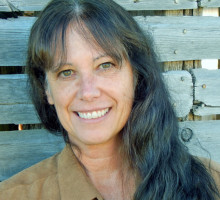
Johns Hopkins UniversityEst. 1876
America’s First Research University
What the Birds Taught Me About Environmental Change

The geese were back on the pond this morning, their honks heralding the changing season. I’ve always noted their springtime arrivals and autumn departures, but since writing my book, The Market in Birds: Commercial Hunting, Conservation, and the Origins of Wildlife Consumerism, I’ve been much more attuned to the comings and goings of the geese, ducks, and other migrating wildfowl that detour from the Mississippi River Flyway to land in my backyard. This year, I’ve seen hooded mergansers, buffleheads, blue-winged teals, mallards, wood ducks, and northern shovelers. One windy day brought a tired trumpeter swan to my pond. I’ve spotted bald eagles in the trees, a young Cooper’s hawk eating a grackle beneath a shrub, and sandhill cranes flying overhead.
It wasn’t always like this.
When I was young, I thought the distinctively patterned wood duck depicted in my 1960s era World Book Encyclopedia was fake—literally, a duck made of wood—because, up to that point, I had encountered only mallards in the wild. Bald eagles were on the brink of extinction then, and seeing one was a rare event. Canadian geese were so exotic that I took dozens of pictures of them at Niagara Falls in the early 1970s. I still find it surprising that these birds have gone from unusual to ubiquitous in my lifetime.
I saw that kind of rapid environmental change, but in reverse, while researching late nineteenth- and early twentieth-century market hunting. The historical record is littered with the recollections of those who witnessed the precipitous decline of wildfowl within their lifetimes. There was Henry Clay Merritt from Illinois who watched “the finest flocks that ever inspired a hunter pass out of existence” during his career in the game business. In the Mississippi Delta, “you could see the birds gettin’ fewer and fewer each year,” remembered others. Passenger pigeons, which Ohio’s legislature famously declared did not need protection in 1857, had disappeared less than sixty years later. Iowa’s erstwhile market hunters claimed that “there ain’t one duck now to where there was a thousand” in the old days. Henry Kleinman, who had hunted the wetlands south of Chicago, lamented the sudden avian loss, writing in 1890: “I have killed a good many ducks in my life. I wish that I could bring some of them back to life again.”
We often think of environmental change as a slow process, measured on the expansive scales of geological or evolutionary time. But the birds tell a different story, one that can be captured in a single lifetime. The history of commercial wildfowling taught me this lesson about the speed with which significant ecological transformations can occur and the dangers of complacency in the face of ongoing environmental harm. Echoes of those turn-of-the-century concerns about cascading avian declines have reemerged in a recent comprehensive study that estimates nearly three billion breeding adult birds have been lost in just the past half-century. This means, writes Gustave Axelson in Living Bird, “if you were alive in the year 1970, more than one in four birds in the U.S. and Canada has disappeared within your lifetime.” This steep downward trend seems unwavering from the nineteenth century onward. If billions of birds have vanished in my lifetime, I can only wonder what the next generation will lose.
Which brings me back to the geese on my pond. Their return is reassuring, for it reminds me that environmental change needn’t proceed in one direction: from abundance to absence. As the authors of that influential avifauna survey note, some groups of birds—waterfowl and raptors among them—have bucked the trend and rebounded to healthy levels in the past fifty years. This resurgence is due, in part, to the actions taken by earlier generations of conservationists, including many of the characters I studied in the book as well as my co-author, Henry M. Reeves. The results of their work are out there on the pond and in the trees around my house. Those birds, and their histories, have taught me to be cautiously optimistic about environmental change and about what can be accomplished in a single lifetime.




